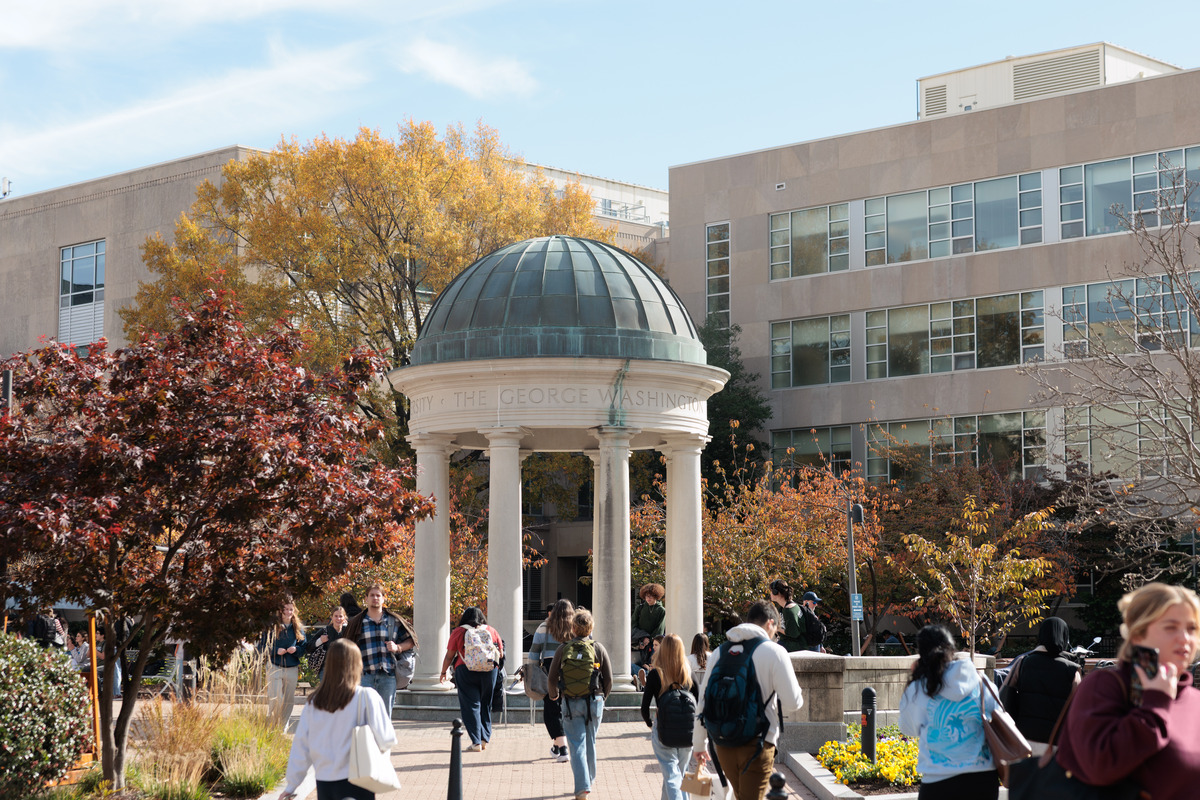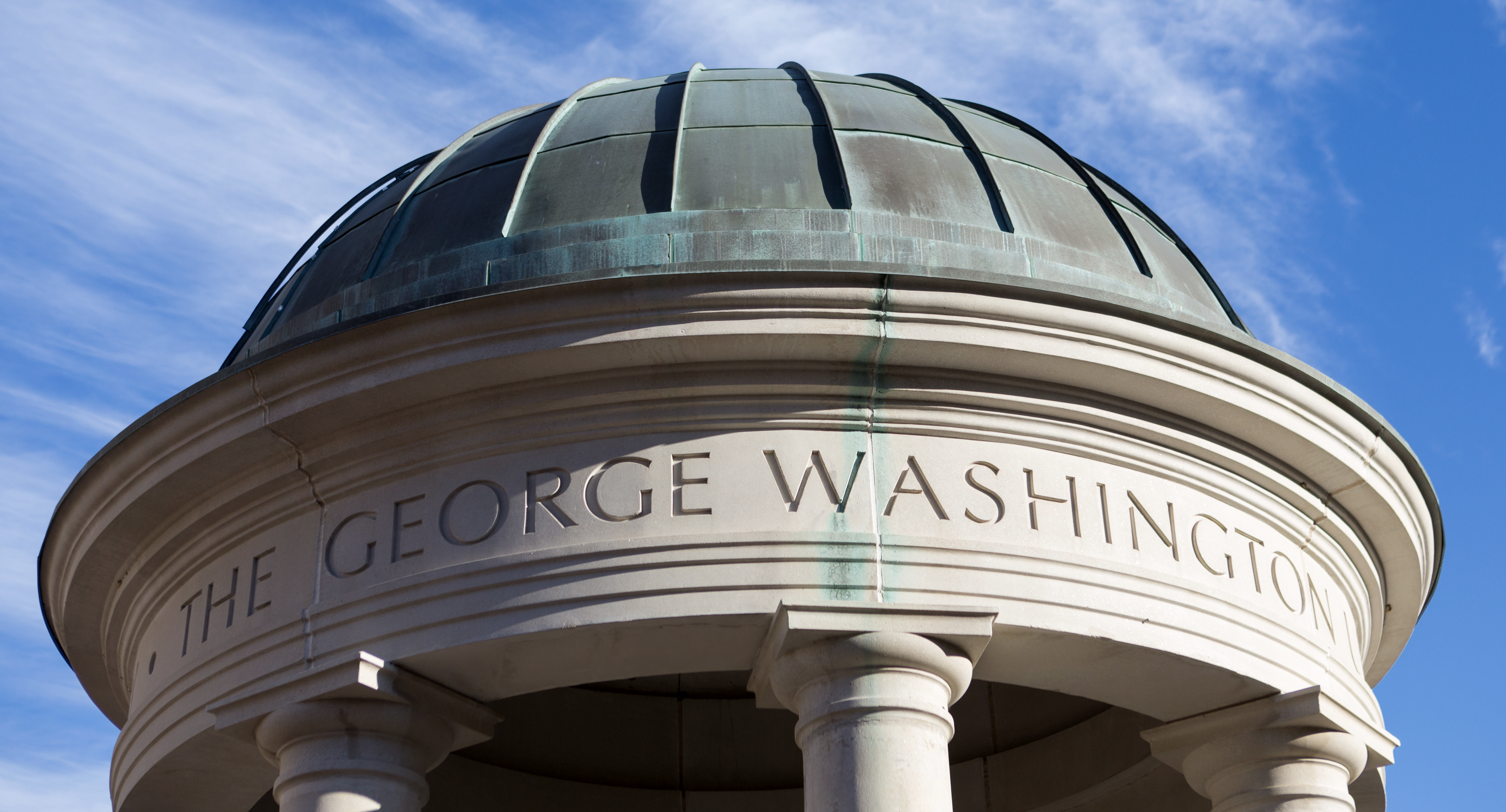A diverse group of George Washington University faculty, staff and students, as well as a member of the local community, otherwise known as the Campus Safety Advisory Committee (CSAC), has issued its first annual report.
Five faculty members, five staff, and five students serve on the committee, chaired by Baxter Goodly, vice president for safety and operations. (Members are invited after consultation with the Faculty Senate, GW Staff Council, and the Dean of Students.) New members for the current academic year will begin meeting soon, tasked with furthering the progress already made and continuing the effort.
Dwayne Kwaysee Wright, assistant professor of higher education administration in the Graduate School of Education and Human Development, said he regarded serving on the committee as a privilege.
"This role enabled me to collaborate with students, staff, university leaders and representatives of the Foggy Bottom/West End community to identify safety concerns, share best practices and develop recommendations aimed at fostering a safer and more inclusive campus environment for everyone. Through our involvement, faculty have championed the expansion of bystander intervention and de-escalation training and remain committed to advocating for open dialogue and evidence-based reforms," Wright said.
"I am dedicated to ensuring that our safety measures reflect the diverse needs and perspectives of the entire GW community, with faculty voices playing a crucial role in shaping these important decisions," Wright added. "Through this ongoing work, I aim to contribute to a campus culture that prioritizes safety and champions respect, equity and collaboration among all members of the university community."
One of the committee’s guiding principles is that “safety” and “comfort” are not synonymous—in fact, growth typically comes with some discomfort. It defines a safe environment as one that affords physical protection and well-being to individuals and groups associated with GW as well as its neighbors, allowing for intellectual, emotional and spiritual growth and promoting interpersonal learning and respectful dialogue.
According to Katie McDonald, associate vice president for campus safety, CSAC is a good source when safety challenges arise on campus.
“It gives us a great way to engage faculty, staff and students, and to hear questions, comments and concerns from them,” McDonald said. “For example, when we went through the recruiting process this summer in the search for a new GW Police chief, we engaged the campus safety advisory committee in the interview process.”
Last year’s committee members reached consensus on two broad recommendations. The first was to improve threat assessment and identification tools, provide additional counseling and mental-health resources for students, and offer improved training for faculty to help them identify and respond to at-risk students. Campus Safety teams, including the GW Police Department, the Office of Advocacy and Support and others, already have efforts to further these goals underway.
The second recommendation made by the committee was to broaden campus training in bystander intervention and de-escalation for students, staff and faculty leaders and other key groups. Training could be expanded for Campus Living and Residential Education teams, sport captains and coaches, fraternity and sorority leaders and others. A logical time to provide such training is during first-year student orientation, McDonald said.
A chief lesson to be conveyed through the training is that people define safety in different ways, and the safety of one person or group should not entail a lack of safety for opposing groups.
“We’ve got really different notions of safety across the committee membership,” McDonald said. “There are some committee members who feel very safe when there is a strong law enforcement presence around and when things are really well lit. Others feel safe when they feel part of a neighborhood. In some instances, safety and comfort have been conflated. There's this push-pull between them.”
This is why de-escalation is important, McDonald said. In case of disagreement, it’s helpful to begin with a focus on dialogue instead of debate. With that in mind, a member of CSAC provided de-escalation training at a meeting and presented both listening skills and techniques for intervention.
“If we have strong de-escalation skills, we can work our way out of a situation,” McDonald said. “We can say, ‘I see that’s a strongly held belief for you. Can you tell me more about that?’ It doesn't have to be a back-and-forth. I don’t want to be too Pollyannaish about this, but de-escalation skills are helpful in all kinds of situations.”
In the end, it’s useful to remember that—though certain situations like gunfights, burning buildings and wartime battles are objectively unsafe by any standard—the definition of “safety” is unique to each of us.




